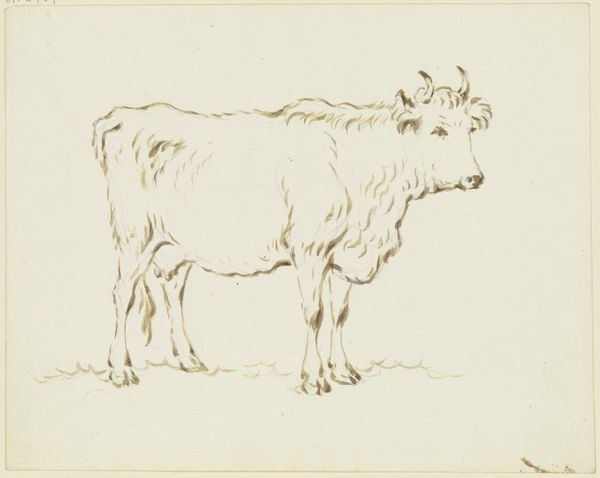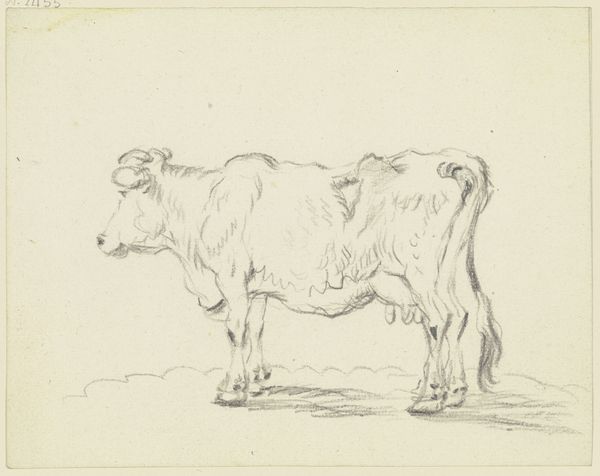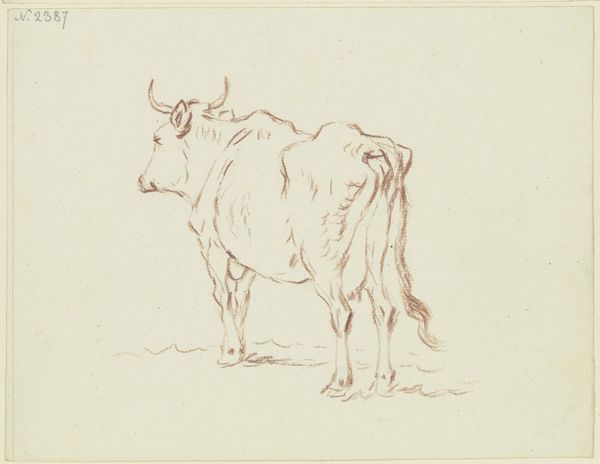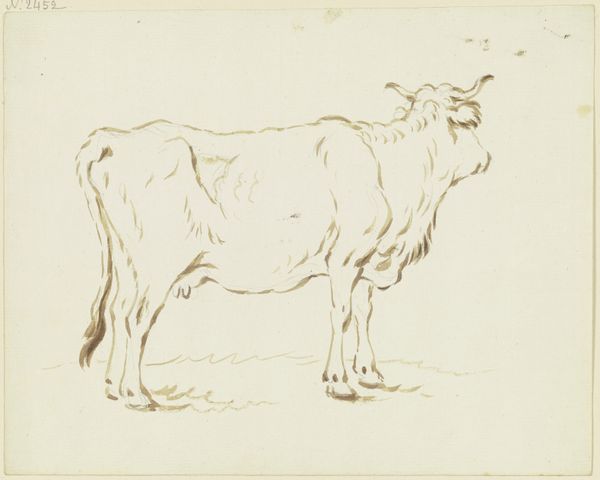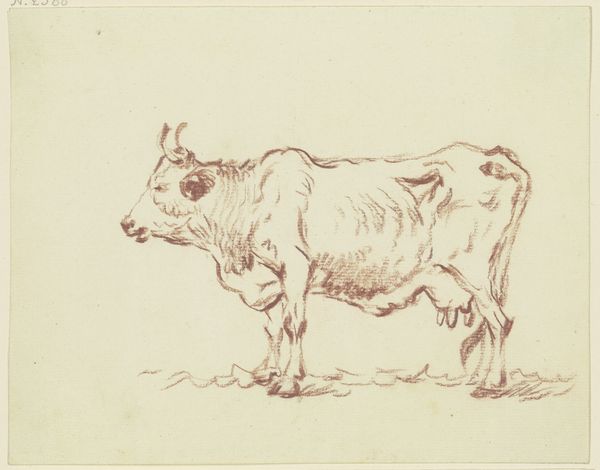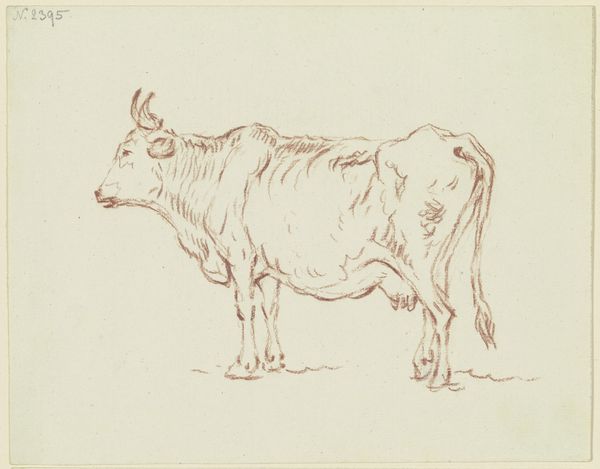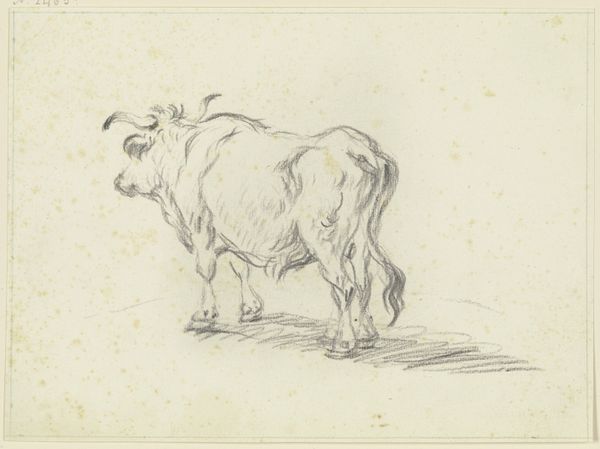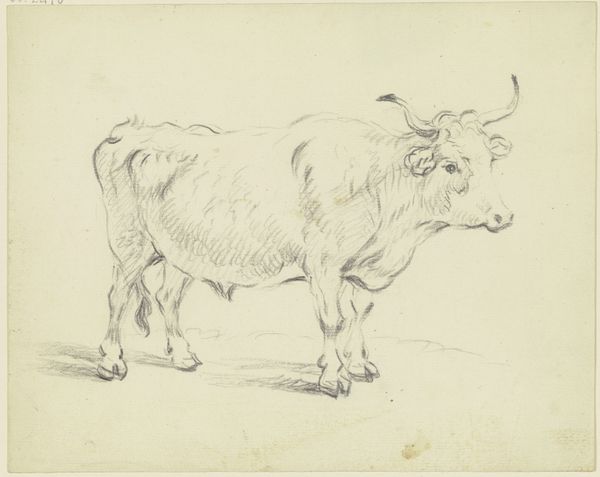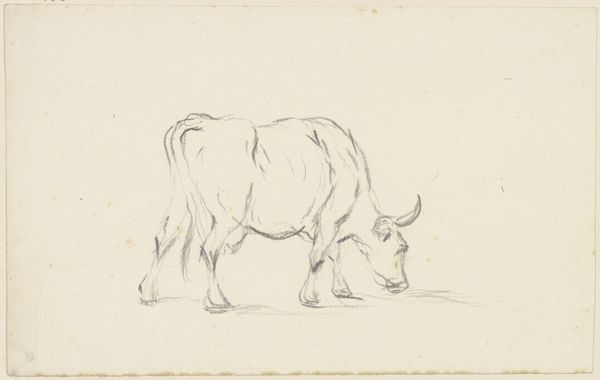
drawing, pencil, chalk
#
portrait
#
drawing
#
pen sketch
#
pencil sketch
#
landscape
#
pencil drawing
#
pencil
#
chalk
#
15_18th-century
#
realism
Copyright: Public Domain
Curator: Looking at this work, Friedrich Wilhelm Hirt’s "Standing cow to the left", rendered in chalk and pencil, possibly during the 18th century... it evokes a sense of rustic simplicity, doesn’t it? Editor: Oh, absolutely! There's a quietness, a stillness to it. You can almost smell the hay and the slightly…earthy aroma. It’s quite a serene portrait of bovine existence, somehow. Curator: The seeming artlessness, though, masks a deliberate rendering of labor and rural life. This piece prompts considerations around pastoral economies and human interactions with animals. Was this drawing an exercise in realism or perhaps a study of the livestock's worth? The marks of chalk and pencil serve to humanize animal production. Editor: Interesting take. I see more of an honest curiosity. Look at the detailing around the joints, the attentiveness toward musculature, the tender way Hirt captures the droop of her udder. The marks reveal the joy of capturing form in its rawest state. A simple cow becomes monumental with such acute and devoted observations. Curator: Of course, it's a study of form. Yet, within 18th-century Neoclassicism, representing labor in such plain terms was almost unheard of. Note how the focus remains fixed upon material circumstances by highlighting labor’s economic role. In that context, the artistic choices are a statement in and of themselves. Editor: Well, maybe we're both right! Perhaps Hirt stumbled upon an unconscious intersection. The social realities existed, but an appreciation also came. Curator: A confluence that has now allowed us to explore society and emotion reflected through the humblest forms, with nothing other than simple marks of chalk and pencil. Editor: Leaving me, now, with an odd desire for fresh milk and sprawling green pastures, all from a small simple cow rendered across time and memory.
Comments
No comments
Be the first to comment and join the conversation on the ultimate creative platform.
